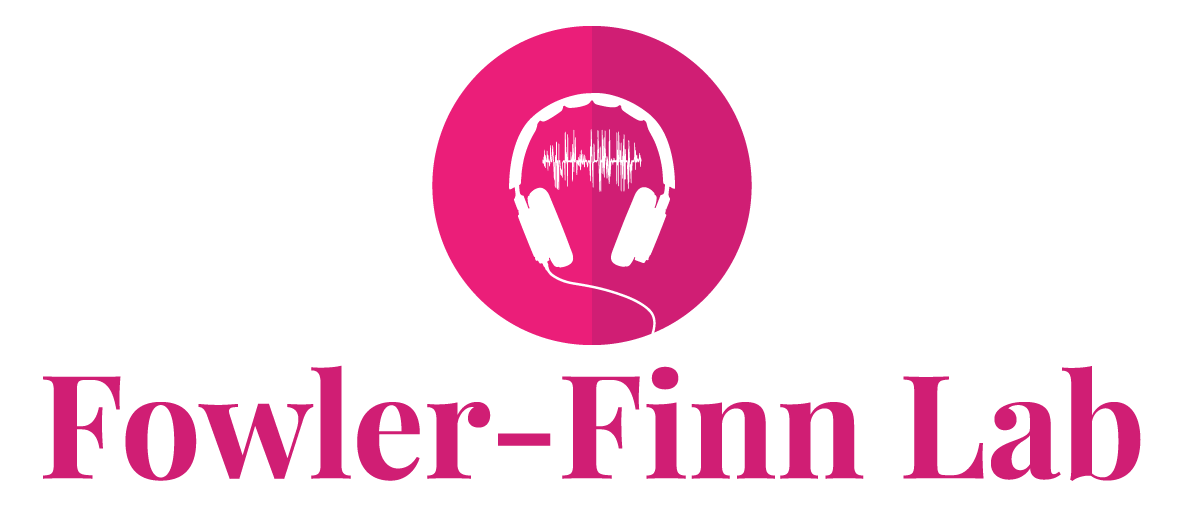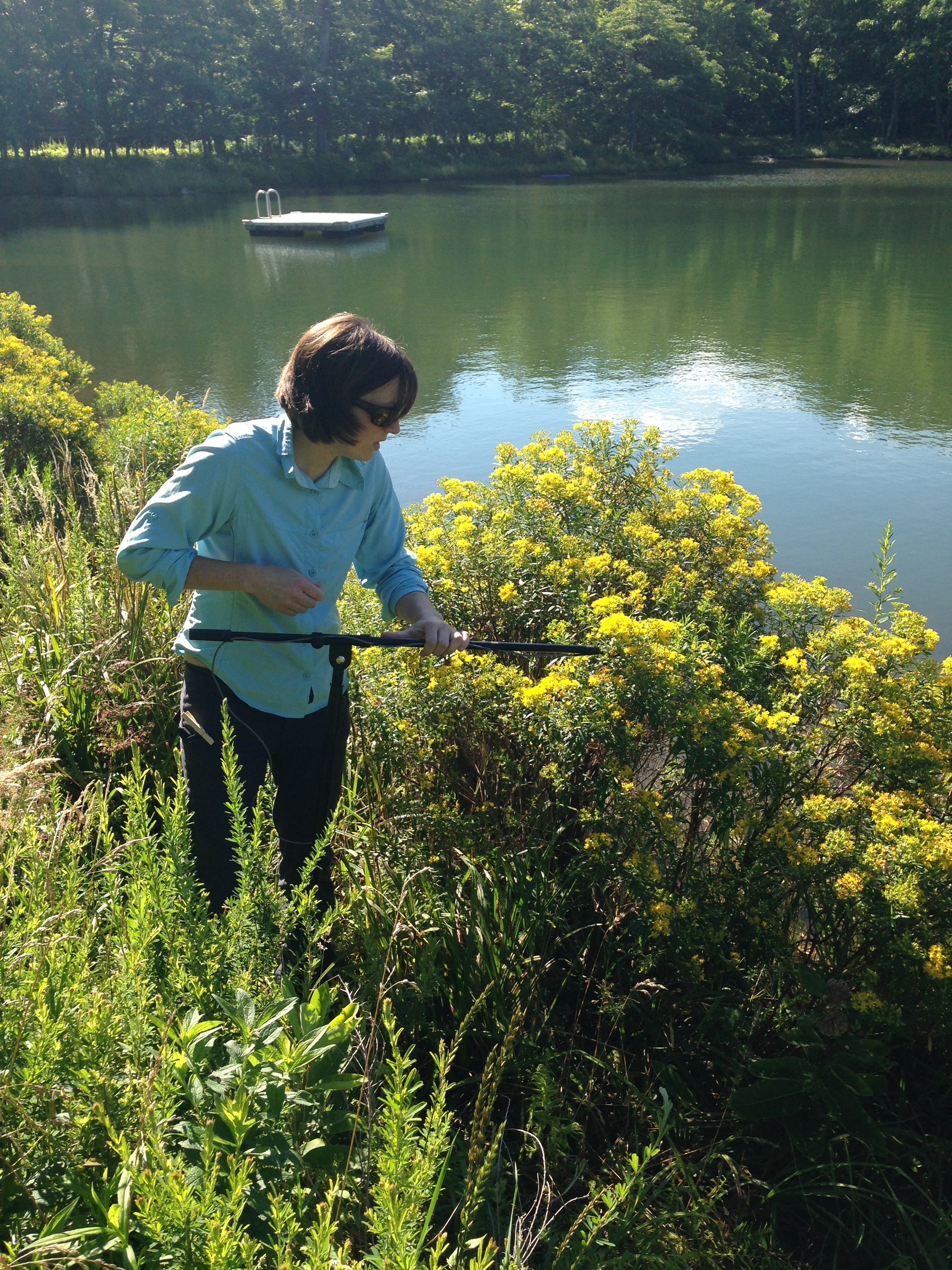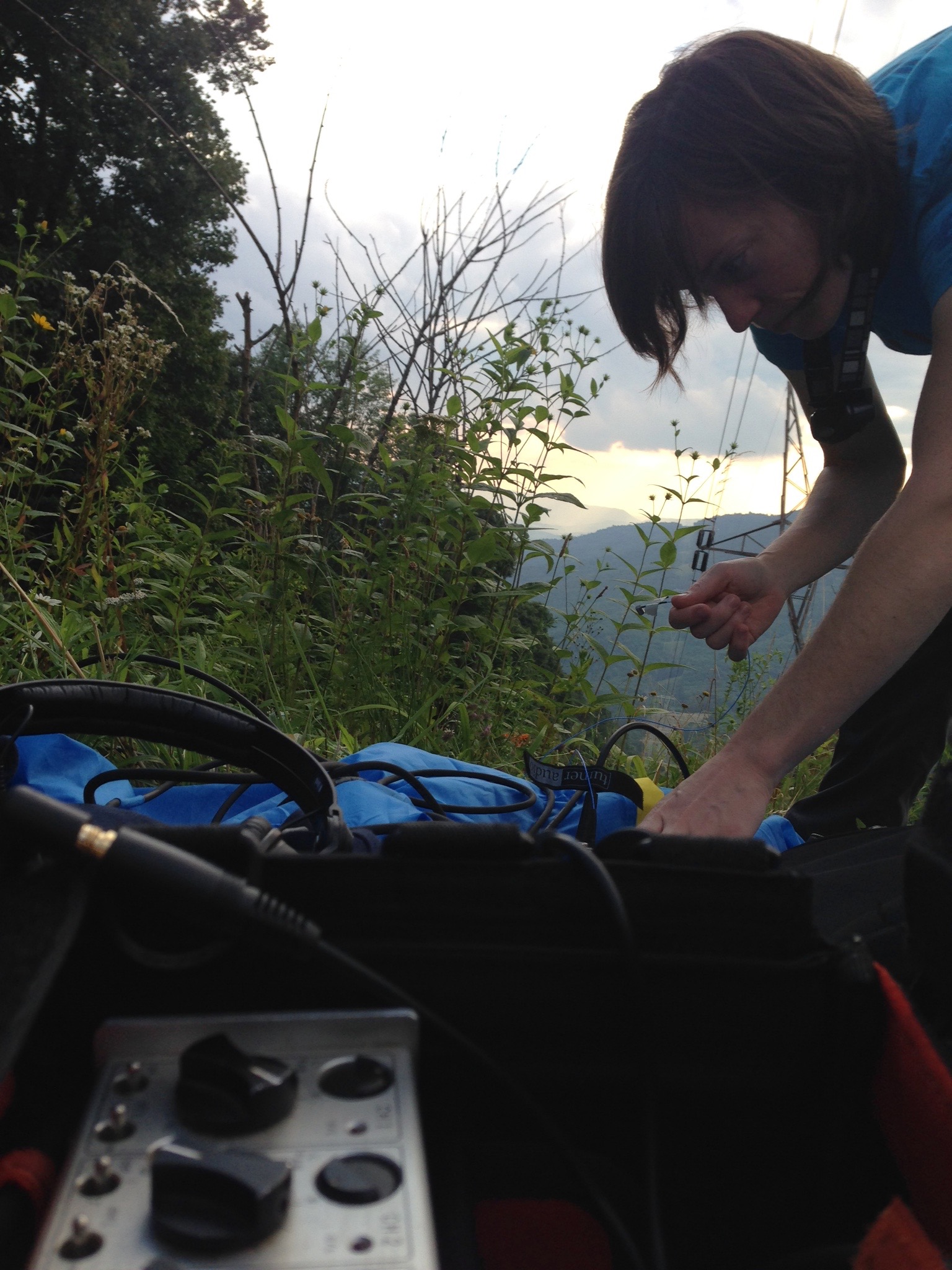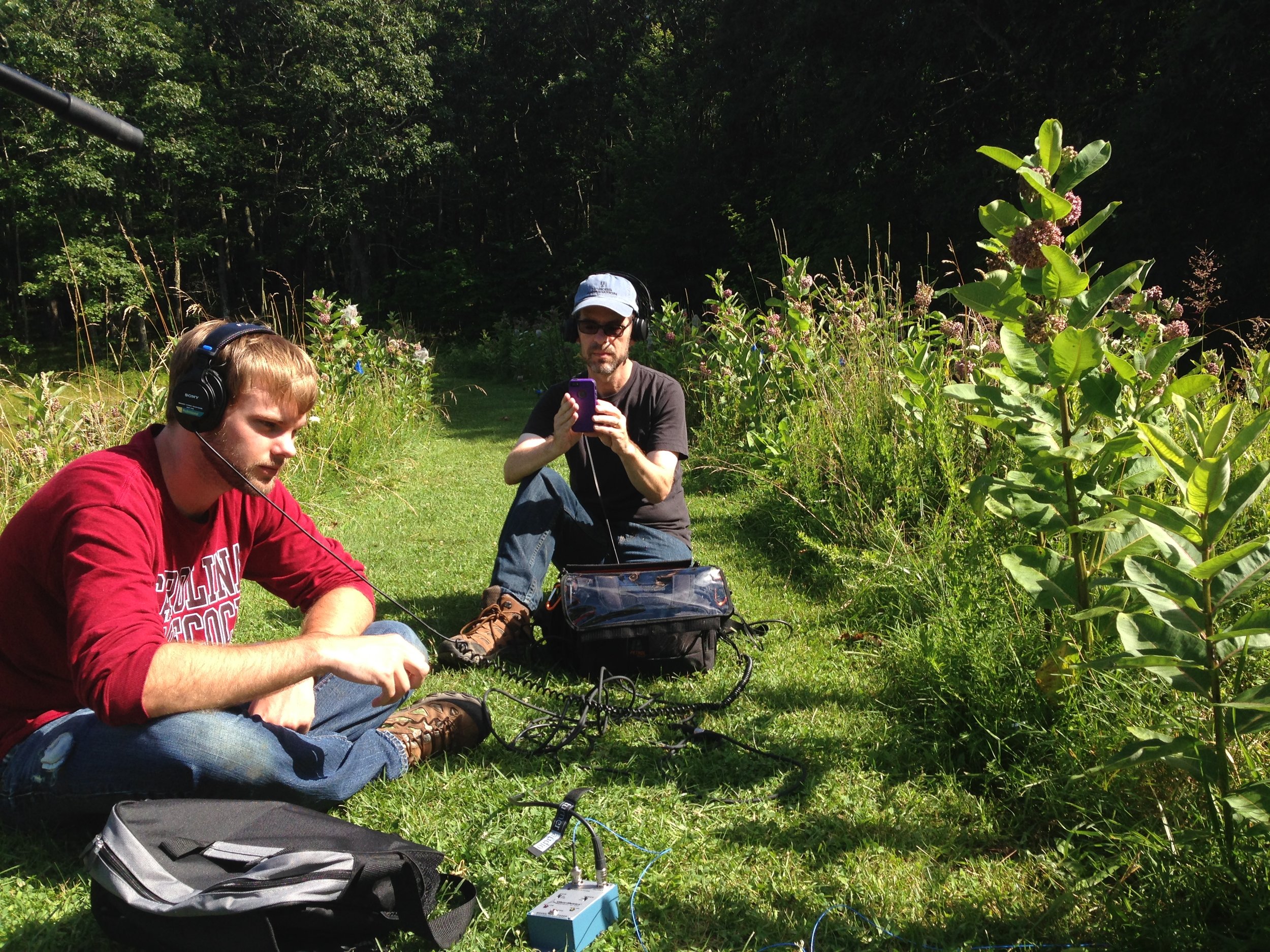Experience Life as an Insect in the Leaves
The Sound Art project began with a fortuitous meeting between Kasey Fowler-Finn and world-renowned sound artist Stephen Vitiello when their time at Mountain Lake Biological Station (MLBS) coincided in 2014.
Kasey was there on an Early Career Fellowship studying harvestmen, and Stephen was a resident artist at MLBS's ArtLab, recording airborne sounds. Their mutual joy of experiencing the world through sound and appreciation of nature led to the development of the project.
In 2015, they returned to MLBS and recorded sounds from insects communicating through the stems and leaves of plants. Those initial recordings sparked an art-science collaboration that has continued to grow.
Since 2014, Kasey and Stephen have developed three immersive audio exhibits that bring visitors into the depths of plant-borne sound. Their latest exhibit demonstrates how global warming may influence communication in vibrational insects and provides visual information developed by Impact media lab on the science behind the art.
How are sounds collected?
Using a specialized laser recording device, Stephen and Kasey capture the sounds of insect movement on the stems and leaves of plants. Stephen then spatializes and manipulates the sound recordings at Virginia Tech's Institute for Creativity, Arts, and Technology (ICAT) studios to reveal a hidden sound world that would otherwise be inaudible.
Our process
Sounds you may hear in the exhibits
Mailer for Too Hot To Sing by Dana Hinterleitner
upcoming exhibits
Too Hot To Sing
Saint Louis University Museum of Art
2/06/2020 - 4/19/2020
Stephen and Kasey are collaborating on their next exhibit, this time with Impact Media Lab! “Too Hot To Sing” demonstrates how global warming may influence communication in vibrational insects. The exhibit will take the listeners through how vibrational signals sound at different temperatures, starting cold and ending hot.
This sound installation will be paired with public talks, by which visitors can learn more about how vibrational signaling is produced, how temperature effects biological processes, and why that means different sounds are produced, as well as the results of the NSF project thus far.
PAST EXHIBITS
Singing Amongst the Weeds
“Singing Amongst the Weeds” was a sound installation and exhibition that brings to life the research in the Fowler-Finn lab with spatial audio compositions of sound artist Stephen Vitiello. The exhibit demonstrates how temperature variation and global warming could affect communication in vibrationally communicating insects. The show communicates results of our research funded by the National Science Foundation.
The recordings were made by Fowler-Finn and Vitiello in and around the grounds of Mountain Lake Biological Station, Pembroke, VA. Vitiello then created an immersive sound work in which sounds are grouped into four “chapters” that reflect insect vibrational songs heard within different temperature ranges — going from cool to hot. Each chapter of the sound mix was set to a color scheme in the gallery so that the listener knows when the lights are blue (for example) the sounds were recorded at a range of 17-18 Celsius.
Accompanying text panels lead the listener through the biology and significance of vibrations, as well as the research that inspired the composition focusing on the role of the environment in the interaction and survival of these insects. This exhibition also premiered new recordings and infographics focused on unique insect sounds that travel as vibrations through plant stems, featuring the songs of treehoppers, oak treehoppers, stink bugs, ebony bugs, and Japanese beetles.
A Scuttering Across the Leaves
"A Scuttering Across the Leaves" was an immersive audio experience that invited participants into the world as experienced by plants and small organisms. This extraordinary world--undetected and unknown to most of the audience--was revealed on a unique, 145-speaker system (The Cube) at Virginia Tech. The show ran for only 10 days in 2015 but drew over 500 visitors.
The installation generated a lot of excitement and interest from folks of diverse ages and backgrounds. Attendees to the opening talk overwhelmingly stated they had a new appreciation for insects and “will never look at insects the same way again.”
This project was supported in part by ICAT, the University of Virginia, St. Louis University, and the Mountain Lake Biological Station's ArtLab.













